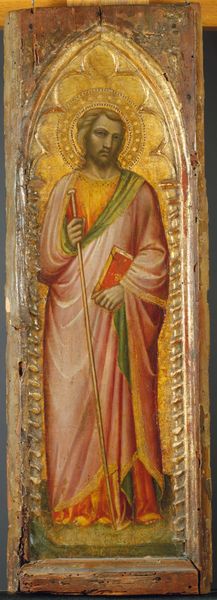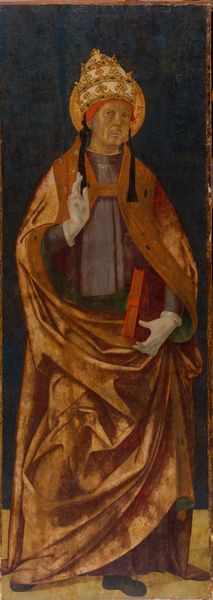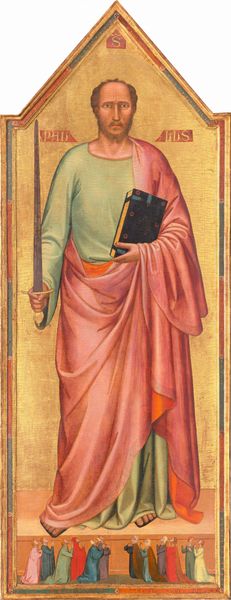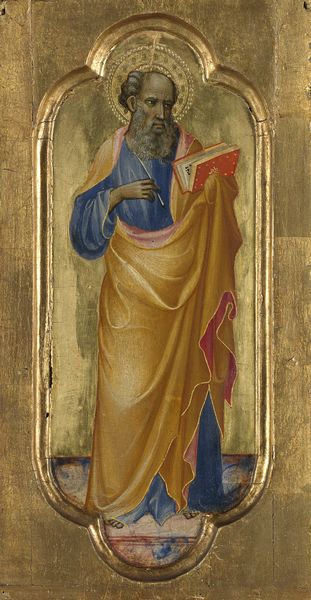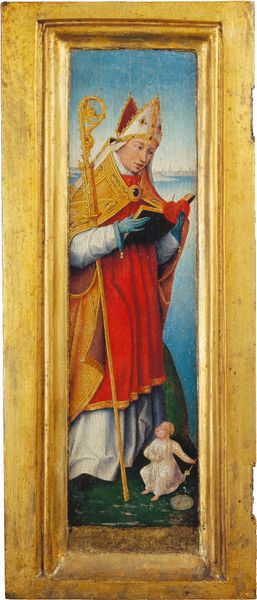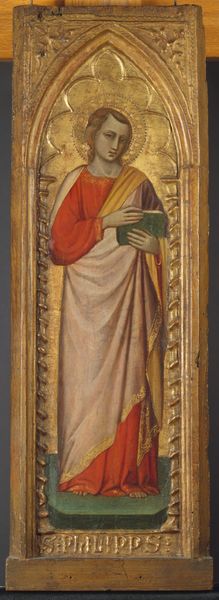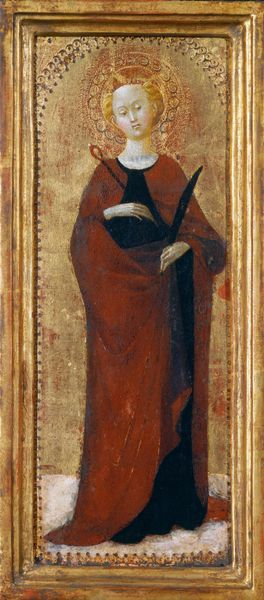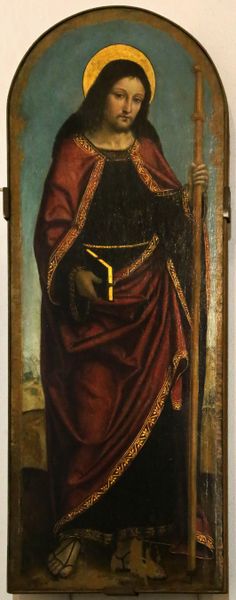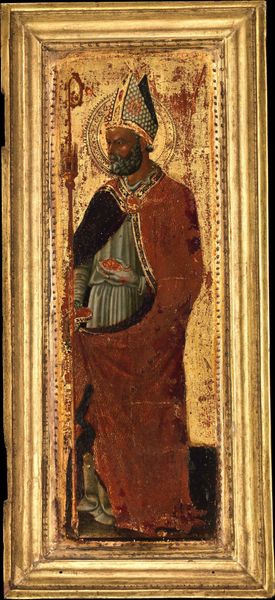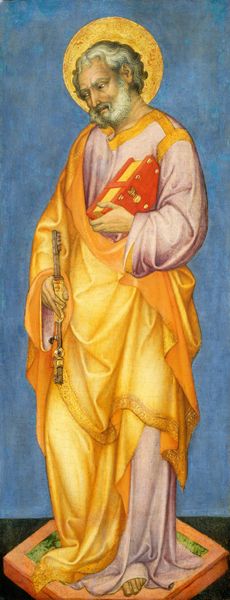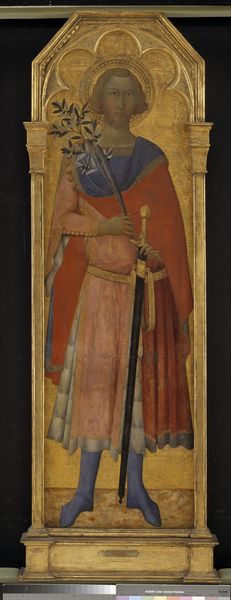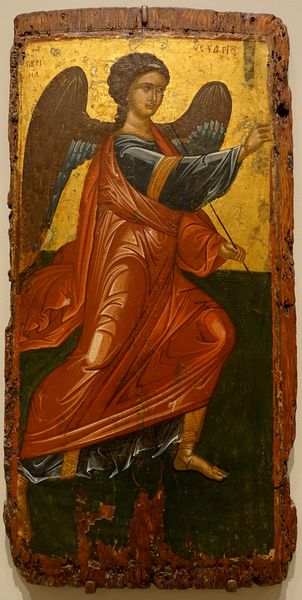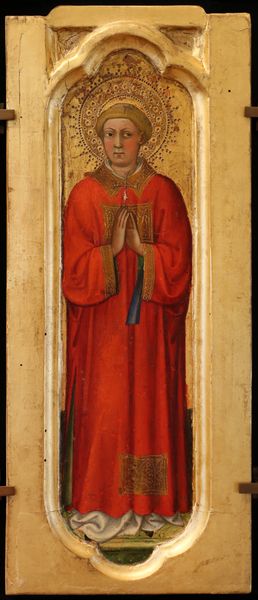
tempera, painting
#
portrait
#
tempera
#
painting
#
figuration
#
oil painting
#
history-painting
#
italian-renaissance
Dimensions: height 35 cm, width 14 cm
Copyright: Rijks Museum: Open Domain
Editor: Today, we're looking at Gherardo Starnina's "Two Evangelists," a tempera on panel painting from around 1407. There’s something really striking about the color palette here. The muted pink and deep red of the robe set against that shimmering gold background… it's captivating. What catches your eye, Professor? Curator: The masterful use of line immediately asserts itself. Observe the rhythmic contouring of the figure's drapery, which effectively defines volume and imparts a sense of dynamism within the panel's confines. Note too, the halo. Its function is not merely decorative; it operates as a symbolic device, elevating the figure through its calculated placement and radiant form. Does the artist’s approach to texture reveal something further about their methods? Editor: Absolutely, looking closely I notice that the brushwork gives texture and the panel, in general, appears very intentional; but if we divorce the art piece from all narrative components such as title and religious figures. Would this have been as impressive during the Italian Renaissance? Curator: Certainly. Even without direct access to its cultural encoding, the piece can be understood through formalist principles. The successful deployment of composition and texture produces a complex image irrespective of external meanings. Indeed, the aesthetic accomplishment becomes clear precisely in the interplay between compositional structure and use of visual elements, that serve as symbolic devices. What conclusions are derived after a closer examination? Editor: I now notice a clearer attention to the linear aspect, as well as a successful creation of dynamic tension on a traditionally flat plane. Curator: Precisely. Editor: That's such a valuable insight into the structure beyond the religious themes that are so well known about the Italian Renaissance. Thank you.
Comments
rijksmuseum about 2 years ago
⋮
Starnina was a widely travelled artist who developed an elegant and highly coloured style in Spain. After he returned to Florence in 1403, his work exerted a profound influence on the artistic development of Lorenzo Monaco and other Florentine painters. These two panels, which are in excellent condition, probably served as wings of a large altarpiece.
Join the conversation
Join millions of artists and users on Artera today and experience the ultimate creative platform.
